
The Battle of Milne Bay, also known as Operation RE or the Battle of Rabi (ラビの戦い) by the Japanese, was a battle of the Pacific campaign of World War II. Japanese naval infantry troops, known as Kaigun Tokubetsu Rikusentai, with two small tanks attacked the Allied airfields at Milne Bay that had been established on the eastern tip of New Guinea. Due to poor intelligence work, the Japanese miscalculated the size of the predominantly Australian garrison and, believing that the airfields were defended by only two or three companies, initially landed a force roughly equivalent in size to one battalion on 25 August 1942. The Allies, forewarned by intelligence from Ultra, had heavily reinforced the garrison.

The 16th Brigade was an infantry brigade in the Australian Army. First raised in 1912 as a Militia formation to provide training under the compulsory training scheme, the brigade was later re-raised as part of the First Australian Imperial Force during World War I. Its existence was short lived, as it was disbanded after about six months, before it could be committed to the fighting on the Western Front. Raised again in 1939 for service during World War II, the brigade was deployed to the Middle East in early 1940 and subsequently saw action in the Western Desert and in Greece in 1941. In 1942, it returned to Australia in response to Japan's entry into the war, and later the brigade played a prominent role in the Kokoda Track campaign and at Buna–Gona in Papua. Withdrawn to Australia in early 1943, the 16th Brigade was re-organised and received many replacements from disbanding formations, but it was not recommitted to combat operations until late in the war. In 1944–1945, the brigade was committed to the Aitape–Wewak campaign in New Guinea. After the war, the brigade was disbanded in 1946. Today, its name is perpetuated by the 16th Aviation Brigade which was raised on 2 April 2002.
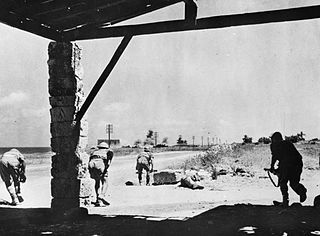
The 17th Brigade was an infantry brigade in the Australian Army. First raised in 1912 as a Militia formation to provide training under the compulsory training scheme, the brigade was later re-raised as part of the First Australian Imperial Force during World War I. Established in 1917 in the United Kingdom, it was broken up and disbanded without seeing action, and its personnel used as reinforcements for other formations. Reformed during World War II, it took part in fighting in Libya, Greece, Crete, Syria in 1941–1942. Following Japan's entry into the war, the Australian government pressed for the 6th Division's return, and the 17th Brigade was subsequently brought back from the Middle East, via Ceylon where they undertook defensive duties until July 1942. Following the brigade's return to Australia, it was deployed to New Guinea for two campaigns: the Salamaua–Lae campaign in 1943 and the Aitape–Wewak campaign in 1944–1945. After the war, the brigade was disbanded in January 1946. Today, its name is perpetuated by the 17th Sustainment Brigade, which was raised as a logistics formation in May 2006.
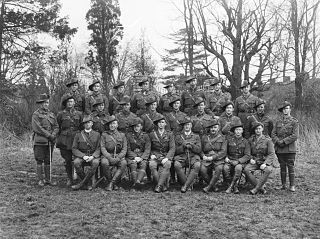
The 39th Battalion was an infantry unit of the Australian Army. It was originally raised in February 1916 for service during World War I as part of First Australian Imperial Force, with personnel being drawn mainly from the state of Victoria. Making up part of the 10th Brigade, it was attached to the 3rd Division and served on the Western Front in France and Belgium before being disbanded in March 1919. Following the re-organisation of the Australian Army in 1921, the battalion was raised again in Victoria as a unit of the Citizens Force, becoming known as the "Hawthorn–Kew Regiment". In 1937, it was amalgamated with the 37th Battalion to become the 37th/39th Battalion. Later, in August 1939 it was delinked with the 37th and amalgamated with the 24th Battalion to form the 24th/39th Battalion, before being raised again as a single unit in October 1941.

The 3rd Battalion was an infantry battalion of the Australian Army. Originally raised as part of the First Australian Imperial Force for service during World War I, the battalion formed part of the 1st Brigade, attached to the 1st Division. It was formed shortly after the war broke out and was among the first Australian units to be sent overseas, arriving in Egypt in December 1914. In April 1915 the battalion participated in the Landing at Anzac Cove, coming ashore in the second and third waves. In December 1915 the 3rd Battalion was evacuated from the Gallipoli peninsula and withdrawn to Egypt again, where it took part in the defence of the Suez Canal before being sent to France to fight on the Western Front in March 1916. For the next two and a half years the unit would serve in the trenches in France and Belgium and would take part in many of the major battles fought during that time. In May 1919, following the end of the war, the battalion was disbanded and its personnel repatriated back to Australia.

The 9th Brigade is a Reserve formation of the Australian Army headquartered at Keswick Barracks in Keswick, South Australia, with elements located in Tasmania, New South Wales and South Australia. The brigade was first raised in 1912 in New South Wales following the introduction of the compulsory training scheme. During World War I, the brigade was formed as part of the First Australian Imperial Force in 1916, with the majority of its recruits coming from New South Wales. It was assigned to the 3rd Division, and training was carried out in the United Kingdom before the brigade was committed to the fighting on the Western Front in November 1916. It fought in numerous battles in France and Belgium for the next two years. After the war, the brigade was disbanded, but was re-raised as a part-time formation in the Sydney area. During World War II, the brigade was mobilised for defensive duties, but did not see active service before it was disbanded in June 1944. In the post war period, the 9th Brigade was re-raised once again as a part-time formation, and forms part of the 2nd Division.

The Markham Valley, Ramu Valley and Finisterre Range campaigns were a series of battles within the broader New Guinea campaign of World War II. The campaigns began with an Allied offensive in the Ramu Valley, from 19 September 1943, and concluded when Allied troops entered Madang on 24 April 1944. During the campaign, Australian forces – supported by Australian and US aircraft – advanced through the Markham Valley and Ramu Valleys during which there were minor clashes with Japanese forces, which withdrew towards their main defensive line in the Finisterre Range.

8th Brigade is an Australian Army Reserve training formation. It is headquartered in Sydney, and has subordinate units in various locations around New South Wales and the rest of Australia. These units are tasked with delivering basic and initial employment training to Reserve soldiers.

The 53rd Battalion was an infantry battalion of the Australian Army. Raised in 1916 for service during World War I the battalion served on the Western Front until the end of the war, before being briefly amalgamated with the 55th Battalion and then eventually disbanded in 1919. In 1921, the 53rd Battalion was re-raised and in 1927 adopted the title of the "West Sydney Regiment"; however, in 1937 they were once again amalgamated with the 55th, forming the 55th/53rd Battalion. In October 1941, during World War II, the two battalions were delinked and the 53rd was later deployed to New Guinea, where they took part in the Kokoda Track campaign. Poorly prepared and trained, and lacking up to date equipment, they did not perform well and were amalgamated with the 55th once more in October 1942, with whom they subsequently took part in further campaigns in New Guinea and Bougainville before being disbanded in May 1946.
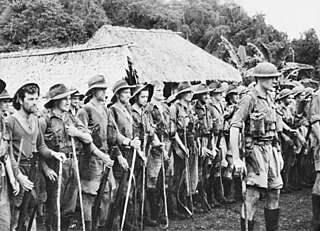
The 30th Brigade was a brigade-sized infantry unit of the Australian Army. Formed in December 1941, as part of the Militia, the unit was raised for service during the Second World War. Established in response to Japan's entry into the war, the brigade's subordinate units were established in several Australian states. Some of these had already been dispatched to New Guinea before the brigade's headquarters was established, although the majority arrived there in early 1942. Following their arrival, the brigade initially provided garrison troops to Port Moresby before later taking part in the fighting along the Kokoda Track during which elements took part in delaying actions around Kokoda and Isurava, before being relieved by units of the Second Australian Imperial Force. After the campaign began to turn in favour of the Australians, the Japanese withdrew north towards their beachheads around Buna and Gona, and elements of the brigade were recommitted to the fighting. In early 1943, the 30th Brigade was withdrawn back to Australia and was disbanded in July 1943, with its personnel being redistributed to other formations.

The 21st Brigade was a brigade-sized infantry unit of the Australian Army. It was briefly raised in 1912 as a Militia formation providing training as part of the compulsory training scheme. Later, it was re-formed in April 1940 as part of the Second Australian Imperial Force, the unit was raised for service during World War II. As part of the 7th Division the brigade's constituent units were raised from volunteers from several Australian states. After rudimentary training in Australia, the brigade deployed for the Middle East in October 1940. Defensive duties were mounted along the Libyan border in early 1941, before the brigade was committed to the Syria-Lebanon campaign, fighting against Vichy French forces. In early 1942, following Japan's entry into the war, the brigade returned to Australia. After a period of defensive duties in Australia, it was deployed to New Guinea and subsequently played a key role in the Kokoda Track campaign, delaying the Japanese advance towards Port Moresby and then joining the pursuit as the Japanese withdrew towards Buna–Gona. In 1943–1944, the brigade took part in the capture of Lae and the Ramu Valley–Finisterre Range campaign. Its final campaign of the war, came in the final months when it took part in the Balikpapan landings. It was disbanded in 1946.

The 55th Battalion was an infantry battalion of the Australian Army. Raised in 1916 for service during World War I the battalion served on the Western Front until the end of the war, before being briefly amalgamated with the 53rd Battalion and then being disbanded in 1919. In 1921, the 55th Battalion was re-raised and in 1927 adopted the title of the "New South Wales Irish Rifles". This designation was later changed to the "New South Wales Rifle Regiment" in 1930, before they were once again amalgamated with the 53rd, forming the 55th/53rd Battalion in 1937. In October 1941, during World War II, the two battalions were delinked and the 55th was later deployed to New Guinea, where they took part in the Kokoda Track campaign, fighting against the Japanese. Poorly prepared and trained, and lacking up to date equipment, they performed above expectations; however, they were amalgamated with the 53rd, which had not fared so well, once more in October 1942. The 55th/53rd subsequently took part in further campaigns in New Guinea and Bougainville before being disbanded in May 1946.

The 2/1st Machine Gun Battalion was a battalion of the Australian Army that was raised for service during World War II as part of the 6th Division. When it was formed on 14 December 1939, its component companies were spread across several Australian states, but it was later concentrated at Ingleburn, New South Wales, where it completed basic training in the early months of the war. In mid-1940, the battalion embarked for overseas, bound initially for the Middle East, but following the Fall of France it was diverted to the United Kingdom. Along with a larger contingent of Australians, it helped to bolster the island's garrison, undertaking defensive duties during a period when it was expected that the Germans might launch a cross-Channel invasion.
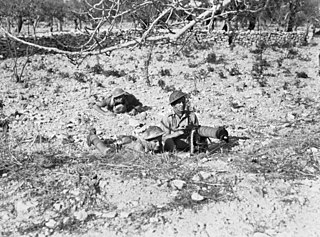
The 2/3rd Machine Gun Battalion was formed in June 1940 as part of the 7th Division and served in Egypt, Syria, the Netherlands East Indies and New Guinea during World War II. Under the command of Lieutenant Colonel Arthur Blackburn when it was raised, the battalion was primarily a South Australian unit, although it had sub-units formed in Victoria, Tasmania and Western Australia. After completing training in Australia, in April 1941 the battalion embarked for the Middle East. In June/July 1941 it saw action against Vichy French forces during the Syria–Lebanon campaign, during which time the battalion was heavily involved in supporting various elements of the 7th Division.

The 2/4th Machine Gun Battalion was an Australian Army unit raised for service with the all volunteer Second Australian Imperial Force during the Second World War. Formed in late 1940 as part of the 8th Division, the battalion was established to provide direct fire support to the division's infantry brigades. It was the fourth, and last, such unit raised within the 2nd AIF. The unit's personnel were largely drawn from the state of Western Australia and after formation, the battalion concentrated near Perth for basic individual training before moving to the Adelaide Hills to complete more advance manouevres.

The 48th Battalion was an infantry battalion of the Australian Army. It was originally raised in 1916 for service during World War I and took part in the fighting in the trenches of the Western Front in France and Belgium, before being disbanded in early 1919. After the war, the battalion was re-raised as a part-time unit based initially in Victoria and later in South Australia. In 1930 it was amalgamated with the 43rd Battalion and remained so until late 1939, subsequently being linked with the 10th Battalion in 1942. The battalion did not see combat during World War II, and after the war was re-raised as an amalgamated unit, again with the 43rd Battalion, in 1952. They remained linked until 1960 when the 43rd/48th Battalion was subsumed by the Royal South Australia Regiment.

The Battle of Dumpu was an action fought in September and October 1943 between Australian and Japanese forces in New Guinea during the Markham and Ramu Valley – Finisterre Range campaign of World War II. After the Battle of Kaiapit on 20 September 1943, in which the 2/6th Independent Company won a stunning victory against a numerically superior Japanese force, Ivan Dougherty's 21st Infantry Brigade of the 7th Division advanced from Kaiapit to Dumpu in the Ramu Valley. During the entire advance, the Australian and American forces in the Ramu Valley were supplied by air. The capture of the Ramu Valley allowed a forward airbase to be developed at Gusap.
The 7th Machine Gun Battalion was a battalion of the Australian Army that was raised for service during World War II. Formed in late 1942 from the machine gun companies of several infantry battalions, the 7th Machine Gun Battalion undertook defensive duties around Port Moresby and Milne Bay during the New Guinea campaign before taking part in the defence of Wau airfield during the Battle of Wau in early 1943. The battalion was returned to Australia in late 1943 and subsequently disbanded in mid-1944.
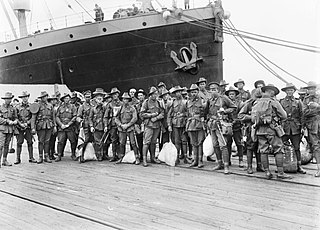
The 5th Machine Gun Battalion was an infantry support unit of the Australian Army. Originally formed in March 1918 for service during World War I as part of the all volunteer Australian Imperial Force, it was one of five such units raised as part of the AIF during the war. The battalion consisted of four machine gun companies, which had previously existed as independent companies assigned mainly at brigade level. The battalion took part in the final stages of the war, seeing action during the Allied defensive operations during the German Spring Offensive and then the Allied Hundred Days Offensive, which finally brought an end to the war. The battalion was disbanded in mid-1919 during the demobilisation of the AIF following the conclusion of hostilities. During World War II, the battalion was re-raised as part of the Militia in September 1942, and undertook garrison duties in the Torres Strait, until it was disbanded in May 1944.

The 20th Pioneer Battalion was an Australian Army pioneer unit that served in New Guinea during World War II. A Militia unit, the battalion was originally formed as a light horse regiment in 1918. Through the 20th Light Horse Regiment, the unit drew lineage back to early Victorian colonial forces, raised in 1885. During the early part of World War II, the unit was converted from a light horse regiment to a motorised unit – the 20th Motor Regiment – and undertook defensive duties in Victoria and then Queensland. In 1944, it deployed in a dismounted role to Merauke in Dutch New Guinea, to defend the Allied airfield that had been constructed there. The unit was later converted into a pioneer battalion in early 1945, deploying to New Guinea in the final stages of the war. It was disbanded in November 1945.




















